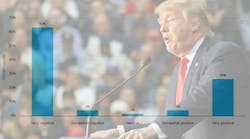Book Review: Principles of Integrated Solid Waste Management
The saying goes, “Don’t judge a book by its cover.” It could go on to say, “…or its thickness.” This book (by H. Lanier Hickman Jr.) covers a lot of ground. It was written and intended to be used as a college textbook. It has already been adopted for use in several college and university programs. This book, however, is also an invaluable reference text for the practicing solid waste management professional. The reason is for the unparalleled range and depth of practical expertise brought together by the author and his contributors.
Pick up this book and use it. While the common thread is solid waste management, it covers a range of ideas and considerations to be implemented by the practicing professional. The opening chapters are mandatory reading for those new to the field of solid waste management, or a new part of it. Chapter 2 outlines the legislative and regulatory framework that has driven the field of solid waste management of the wastestream to where it is today. Discussion on the Commerce Clause, Carbone, and flow control is stated in a comprehensive and logical way, ready to be made useful to one’s own situation.
Don’t plan on starting to read this book from the beginning. It is a dynamic reference text that should be at hand and ready for use anytime. My initial entry led me quickly and efficiently to the section on landfill gas generation. While I discovered part of what I was looking for-6.6 lb. of LFG per pound of refuse-I was not able to locate the other piece, a conversion factor leading to pounds of methane. My reading of this chapter, however, revealed its depth and accuracy on the complex art of LFG management. The information in the beginning can be found in any number of books and articles on LFG management. The author, however, continues with a thorough discussion on gas monitoring, construction and placement of monitoring and recovery wells, and facility processes. The rich experience of Fred Rice and the other contributors provides assurance about the reliability and accuracy of the information in this section.
The collection chapter is an excellent source of information for the beginning student and practicing professional. The topic is broad, but the material is well organized and presented with useful detail. I found discussion on routing to be interesting and informative, mixed with instructive illustrations. The information in this chapter, however, might not satisfy the seasoned collection professional in the discussion of the latest technology in routing or choice of single-stream versus multibin residential recycling containers.
Chapter 5, which covers recycling, appropriately focuses on planning a recycling program and marketing of the material. Again, there is a thorough presentation on the reasons for recycling and wastestream classifications. Recyclable products and values are presented in a table, and while the pricing values were outdated before the book went to print, the format for presentation should be useful to all. Those new to the field will find useful reference data to assist in locating secondary markets. This chapter continues with a thorough discussion on material recovery facilities for the processing of curbside materials. The text draws up short on discussion of MRFs, which process a wastestream beyond curbside material, such as self-haul and debris boxes. These materials represent a large fraction of the wastestream and a large potential for diversion. The author no doubt chose to draw the line at this point, since the subject of recycling and processing of recyclables could take up an entire text by itself.
Finally comes the topic of landfilling in Chapter 8. This is where many of you will begin the book, and you will not be disappointed by the detailed information found here. The author’s colleague, Dick Eldridge, has openly shared his considerable knowledge in an easy-to-understand format. If there is any one area of waste management to make or lose money, it is in the operation of a landfill’s working face. This chapter should be mandatory reading for those out working the garbage! The information is well organized and presented and represents sound, practical experience. This chapter also contains clear, useful, and detailed discussions on landfill design principles, water management, environmental controls, and closure. Again, one is left with a healthy respect for the depth of experience of the authors of this chapter.
In writing this text, the author has drawn together an impressive and unparalleled collection of contributors from all fields of solid waste management. Each of them are practicing experts in their own area of solid waste. Knowing the effort that went into pulling this talent together, taking their information and editing it into one text leaves one in a sense of awe. What the author has left us with is a reliable reference source we can trust.
Put this book on your bookshelf within easy reach…and use it!


